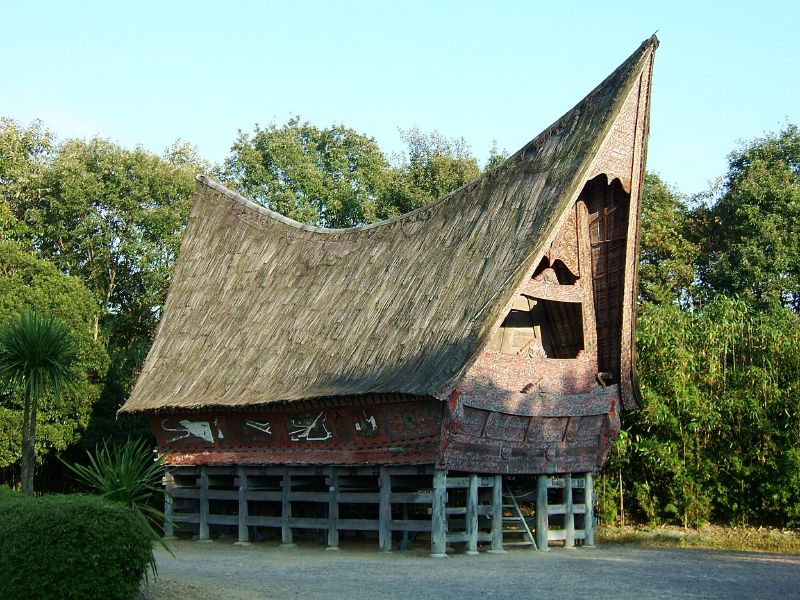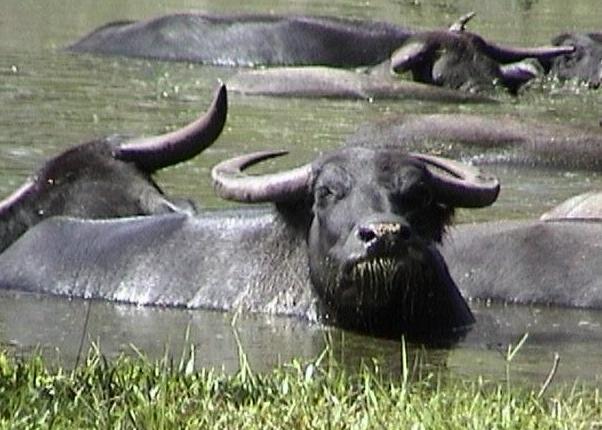|
Tongkonan
Tongkonan is the traditional ancestral house, or ''rumah adat,'' of the Torajan people in South Sulawesi, Indonesia. ''Tongkonan'' has a distinguishing boat-shaped and oversized saddleback roof. Like most of the Indonesia's Austronesian-based traditional architecture, ''tongkonan'' is built on piles. Its construction is a laborious task, and it is usually built with the help of all family members or friends. In the original Toraja society, only nobles had the right to build ''tongkonan''. Commoners live in smaller and less decorated homes called ''banua''. Background Sulawesi (formerly known as the Celebes) is a large island, extraordinarily contorted in shape, lying between Kalimantan (Indonesian Borneo) and the Maluku Island group (also known as the Moluccas). It is an island abundant in natural resources with a rich and varied array of cultures, including some of the most distinctive and anthropologically significant in Indonesia. The dominant groups of the island are the ... [...More Info...] [...Related Items...] OR: [Wikipedia] [Google] [Baidu] |
Tana Toraja Regency
Tana Toraja ( 'Toraja Land' in Toraja language) is a landlocked regency ('' kabupaten'') of South Sulawesi Province of Indonesia, and home to the Toraja ethnic group. It covers an area of and had a population of 221,081 at the 2010 censusBiro Pusat Statistik, Jakarta, 2011. and 280,794 at the 2020 census;Badan Pusat Statistik, Jakarta, 2021. the official estimate as at mid 2022 was 291,046 (comprising 150,655 males and 140,391 females),Badan Pusat Statistik, Jakarta, 2023, ''Kabupaten Tana Toraja Dalam Angka 2023'' (Katalog-BPS 1102001.7318) but the official figure for mid 2023 was a much reduced total of 257,901 (comprising 132,284 males and 125,617 females).Badan Pusat Statistik, Jakarta, 28 February 2024, ''Kabupaten Tana Toraja Dalam Angka 2024'' (Katalog-BPS 1102001.7318) The local government seat is in the town of Makale, while the traditional center of Toraja culture is in Rantepao. Formerly, the Tana Toraja area covered a larger area, but on 24 June 2008 this was divi ... [...More Info...] [...Related Items...] OR: [Wikipedia] [Google] [Baidu] |
Toraja
The Torajan are an ethnic group indigenous people, indigenous to a mountainous region of South Sulawesi, Indonesia. Their population is approximately 1,100,000, of whom 450,000 live in the List of regencies and cities of Indonesia, regency of Tana Toraja ("Land of Toraja"). Most of the population is Christianity, Christian, and others are Islam, Muslim or have local animism, animist beliefs known as ''aluk'' ("the way"). The Indonesian government has recognised this animistic belief as ''Aluk To Dolo'' ("Way of the Ancestors") as well as ''Hindu Alukta'', namely, a form of Hinduism in Indonesia. The word ''Toraja'' comes from the Buginese language term ''to riaja'', meaning "people of the uplands", this cognates with the Toraja language ''to'' ''raya''/''to'' ''raja''/''to raa'' which also means "inland/upland people" or "northern people". The Dutch East Indies, Dutch colonial government named the people ''Toraja'' in 1909. Torajans are renowned for their elaborate Funeral, fune ... [...More Info...] [...Related Items...] OR: [Wikipedia] [Google] [Baidu] |
South Sulawesi
South Sulawesi () is a Provinces of Indonesia, province in the South Peninsula, Sulawesi, southern peninsula of Sulawesi, Indonesia. The Selayar Islands archipelago to the south of Sulawesi is also part of the province. The capital and largest city is Makassar. The province is bordered by Central Sulawesi and West Sulawesi to the north, the Gulf of Bone and Southeast Sulawesi to the east, Makassar Strait to the west, and Flores Sea to the south. The 2010 census estimated the population as 8,032,551,Biro Pusat Statistik, Jakarta, 2011. which makes South Sulawesi the most populous province on the island (46% of the population of Sulawesi is in South Sulawesi), and the sixth most populous province in Indonesia. At the 2020 Census, this had risen to 9,073,509,Badan Pusat Statistik, Jakarta, 2021. and the official estimate as of mid-2024 was 9,463,390 (comprising 4,701,970 males and 4,761,410 females).Badan Pusat Statistik, Jakarta, 28 February 2025, ''Provinsi Sulawesi Selatan Dalam A ... [...More Info...] [...Related Items...] OR: [Wikipedia] [Google] [Baidu] |
Indonesia
Indonesia, officially the Republic of Indonesia, is a country in Southeast Asia and Oceania, between the Indian Ocean, Indian and Pacific Ocean, Pacific oceans. Comprising over List of islands of Indonesia, 17,000 islands, including Sumatra, Java, Sulawesi, and parts of Borneo and New Guinea, Indonesia is the world's largest archipelagic state and the List of countries and dependencies by area, 14th-largest country by area, at . With over 280 million people, Indonesia is the world's List of countries and dependencies by population, fourth-most-populous country and the most populous Islam by country, Muslim-majority country. Java, the world's List of islands by population, most populous island, is home to more than half of the country's population. Indonesia operates as a Presidential system, presidential republic with an elected People's Consultative Assembly, legislature and consists of Provinces of Indonesia, 38 provinces, nine of which have Autonomous administrative divisi ... [...More Info...] [...Related Items...] OR: [Wikipedia] [Google] [Baidu] |
Rumah Adat
''Rumah adat'' are traditional houses built in any of the vernacular architecture styles of Indonesia, collectively belonging to the Austronesian architecture. The traditional houses and settlements of the several hundreds ethnic groups of Indonesia are extremely varied and all have their own specific history. It is the Indonesian variants of the whole Austronesian architecture found all over places where Austronesian people inhabited from the Pacific to Madagascar each having their own history, culture and style. Ethnic groups in Indonesia are often associated with their own distinctive form of ''rumah adat''.Dawson (1994), p. 10 The houses are at the centre of a web of customs, social relations, traditional laws, taboos, myths and religions that bind the villagers together. The house provides the main focus for the family and its community, and is the point of departure for many activities of its residents.Dawson (1994), p. 8 Villagers build their own homes, or a community po ... [...More Info...] [...Related Items...] OR: [Wikipedia] [Google] [Baidu] |
Taman Mini Indonesia Indah
Taman Mini Indonesia Indah (; formerly Taman Mini "Indonesia Indah" with apostrophes—abbreviated as TMII) is a culture-based recreational area located in East Jakarta, Indonesia. Since July 2021, it is operated by InJourney Destination Management (PT Taman Wisata Candi Borobudur, Prambanan, dan Ratu Boko), a subsidiary of the State-owned enterprises of Indonesia, state-owned tourism holding company w:id:Injourney, InJourney. It was operated by Yayasan Harapan Kita, a foundation established by Siti Hartinah, the first lady during most of the New Order (Indonesia), New Order and wife of Suharto, and run by Suharto's descendants since his death until 2021. It has an area of about . The project cost some US$26 million. The park is a synopsis of Culture of Indonesia, Indonesian culture, with virtually all aspects of daily life in Indonesia's 26 (in 1975) Provinces of Indonesia, provinces encapsulated in separate pavilions with the collections of ''rumah adat'' as the example of Indo ... [...More Info...] [...Related Items...] OR: [Wikipedia] [Google] [Baidu] |
Architecture Of Indonesia
The architecture of Indonesia reflects the diversity of Culture of Indonesia, cultural, History of Indonesia, historical, and Geography of Indonesia, geographic influences that have shaped Indonesia as a whole. Invaders, colonizers, missionaries, merchants, and traders brought cultural changes that had a profound effect on building styles and techniques. Numbers of Indonesian Rumah adat, vernacular houses have been developed throughout the archipelago. The traditional houses and settlements of the several hundred ethnic groups of Indonesia are extremely varied and all have their specific history. The houses hold social significance in society and demonstrate local ingenuity in their relations to the environment and spatial organisation. Traditionally, the most significant foreign influence has been India. However, Chinese, Arab, and European influences have also played significant roles in shaping Indonesian architecture. Religious architecture varies from indigenous forms to m ... [...More Info...] [...Related Items...] OR: [Wikipedia] [Google] [Baidu] |
Austronesian Peoples
The Austronesian people, sometimes referred to as Austronesian-speaking peoples, are a large group of peoples who have settled in Taiwan, maritime Southeast Asia, parts of mainland Southeast Asia, Micronesia, coastal New Guinea, Island Melanesia, Polynesia, and Madagascar that speak Austronesian languages. They also include indigenous ethnic minorities in Vietnam, Cambodia, Myanmar, Thailand, Hainan, the Comoros, and the Torres Strait Islands. The nations and territories predominantly populated by Austronesian-speaking peoples are sometimes known collectively as Austronesia. The group originated from a prehistoric seaborne migration, known as the Austronesian expansion, from Taiwan, circa 3000 to 1500 BCE. Austronesians reached the Batanes Islands in the northernmost Philippines by around 2200 BCE. They used sails some time before 2000 BCE. In conjunction with their use of other maritime technologies (notably catamarans, outrigger boats, lashed-lug boats, and the crab ... [...More Info...] [...Related Items...] OR: [Wikipedia] [Google] [Baidu] |
Animal Sacrifice
Animal sacrifice is the ritual killing and offering of animals, usually as part of a religious ritual or to appease or maintain favour with a deity. Animal sacrifices were common throughout Europe and the Ancient Near East until the spread of Christianity in Late Antiquity, and continue in some cultures or religions today. Human sacrifice, where it existed, was always much rarer. All or only part of a sacrificial animal may be offered; some cultures, like the Ancient Greeks ate most of the edible parts of the sacrifice in a feast, and burnt the rest as an offering. Others burnt the whole animal offering, called a Holocaust (sacrifice), holocaust. Usually, the best animal or best share of the animal is the one presented for offering. Animal sacrifice should generally be distinguished from the religiously prescribed methods of ritual slaughter of animals for normal consumption as food. During the Neolithic Revolution, early humans began to move from hunter-gatherer cultures toward ... [...More Info...] [...Related Items...] OR: [Wikipedia] [Google] [Baidu] |
Domestic Buffalo
The water buffalo (''Bubalus bubalis''), also called domestic water buffalo, Asian water buffalo and Asiatic water buffalo, is a large bovid originating in the Indian subcontinent and Southeast Asia. Today, it is also kept in Italy, the Balkans, Australia, North America, South America and some African countries. Two extant Type (biology), types of water buffalo are recognized, based on Morphology (biology), morphological and Ethology, behavioural criteria: the river buffalo of the Indian subcontinent and further west to the Balkans, Egypt and Italy; and the swamp buffalo from Assam in the west through Southeast Asia to the Yangtze Valley of China in the east. The wild water buffalo (''Bubalus arnee'') is most probably the ancestor of the domestic water buffalo. Results of a phylogenetic study indicate that the river-type water buffalo probably originated in western India and was domesticated about 6,300 years ago, whereas the swamp-type originated independently from Mainland Sou ... [...More Info...] [...Related Items...] OR: [Wikipedia] [Google] [Baidu] |
Megalithic
A megalith is a large Rock (geology), stone that has been used to construct a prehistoric structure or monument, either alone or together with other stones. More than 35,000 megalithic structures have been identified across Europe, ranging geographically from Sweden in the north to the Mediterranean Sea in the south. The word was first used in 1849 by the British antiquarian Algernon Herbert in reference to Stonehenge and derives from the Ancient Greek words "wikt:μέγας, mega" for great and "wikt:λίθος, lithos" for stone. Most extant megaliths were erected between the Neolithic period (although earlier Mesolithic examples are known) through the Chalcolithic, Chalcolithic period and into the Bronze Age. Types and definitions While "megalith" is often used to describe a single piece of stone, it also can be used to denote one or more rocks hewn in definite shapes for special purposes. It has been used to describe structures built by people from many parts of the wo ... [...More Info...] [...Related Items...] OR: [Wikipedia] [Google] [Baidu] |





